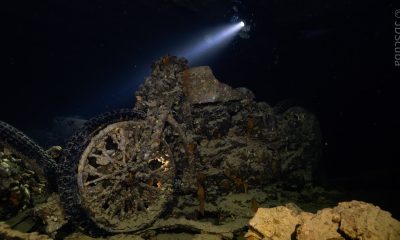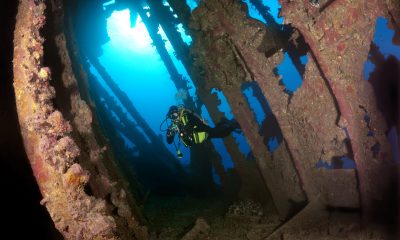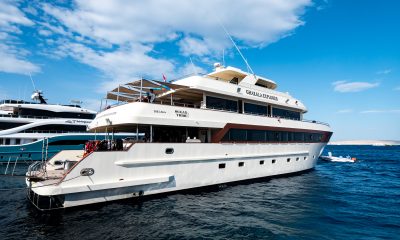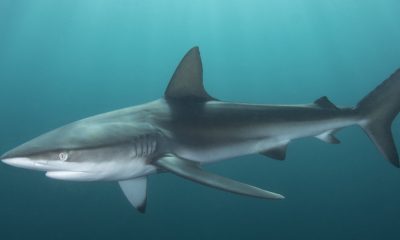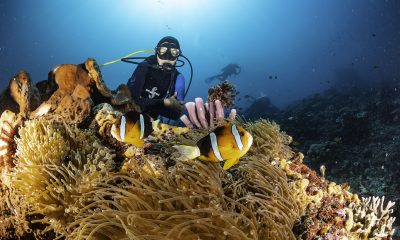News
Top Liveaboards for Small Groups
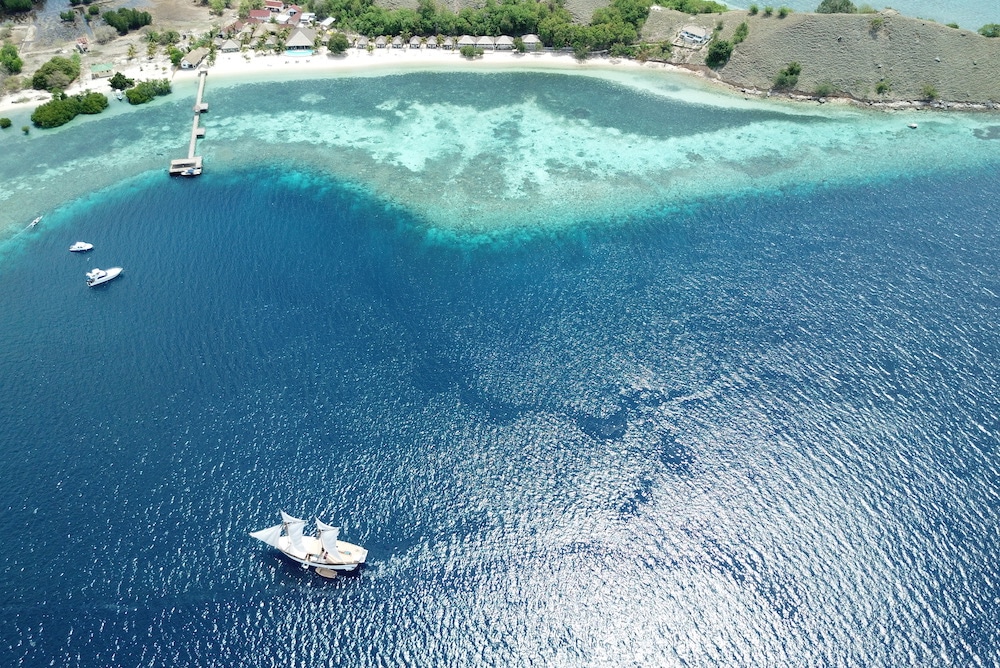
Part of the fun of joining a liveaboard safari is meeting new people from around the world and being part of a like-minded group of divers exploring the ocean. Sometimes divers want a quieter experience on the seas with fewer people around them. Thankfully, there are some great liveaboards that cater specifically for small groups and offer island-hopping, sailing, and land excursions whilst visiting world-class dive destinations.
Here are our top liveaboards for small groups:
Tanaka, Indonesia
Indonesia needs no introduction as a world-class diving destination and is popular with divers from around the globe. It is one of the most species rich dive locations on earth and has dives suitable for every type of diver. Komodo is an Indonesian highlight with its rare pink sands, and offers muck diving, large pelagic species and great water visibility. Komodo Liveaboard diving with the Tanaka phinisi is ideal for small groups, families and couples. Built in 2014, she caters for just 14 guests and offers safaris from 3 to 10 nights long in the Komodo National Park.
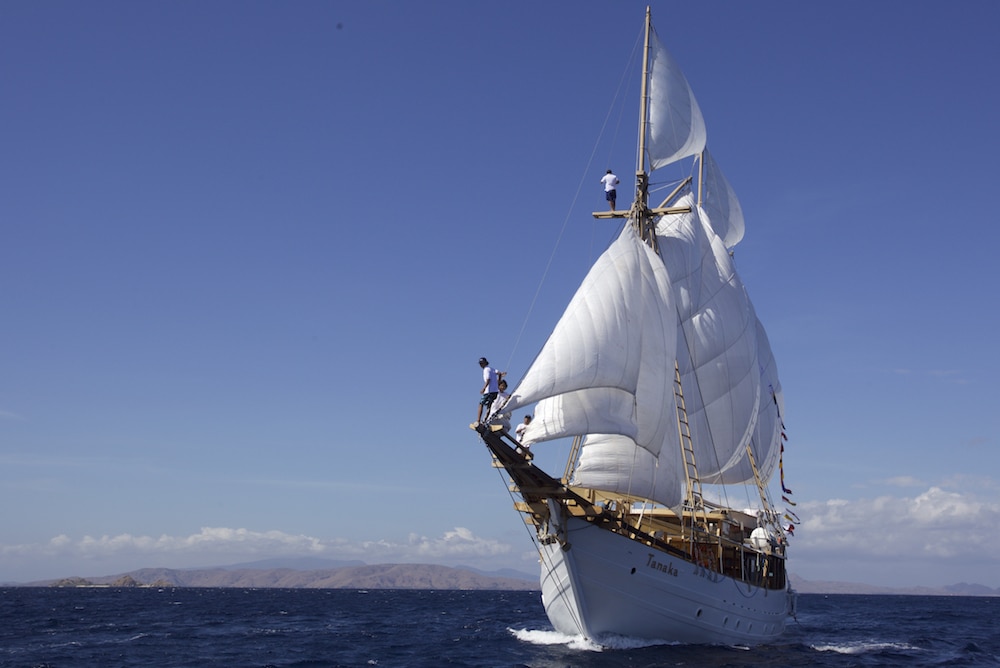
The dive sites of Komodo are ideal for both macro photographers searching for tiny critters and for fans of big marine life such as mantas, dolphins, hammerhead sharks and mola mola. Manta Alley and Manta Point fare known for large groups of visiting manta rays and Rinca Island is the place to visit to see Komodo dragons and to search for macro life amongst the corals. Batu Balong has abundant and colourful corals on the reef and abundant fish life, making it one of the flagship Komodo dives. Bima is ideal for muck diving and the volcanic island of Sangeang has bubbling black volcanic sands, thanks to underwater vents below.
The amount and diversity of marine life at Komodo is staggering and includes over 1000 fish species, plus highlights such as bamboo sharks, marble rays, dusky sharks, leaf fish, pygmy seahorses, octopi, frogfish, reef sharks, dugong, mandarin fish and more.
Currents can be strong, and the diving is best-suited to experienced divers. The best time to dive Indonesia is during May to September when the conditions are calmer.
Aqua Tiki II, French Polynesia
French Polynesia is made up of 118 islands and was one of the last places on Earth settled by humans. Many of the islands are still uninhabited and they are a topical paradise; with white-sand beaches and palm-covered islands to explore, diverse underwater landscapes and abundant marine life. Being remote, the dives sites of French Polynesia are best accessed by liveaboard. The Aqua Tiki II catamaran is well-suited for small groups visiting French Polynesia. She caters for just 8 guests and has a lounge, cocktail bar, library, outdoor dining area and two trampolines. Divers can enjoy a variety of dive sites plus pristine beaches, water sports and island-hopping to meet the locals.
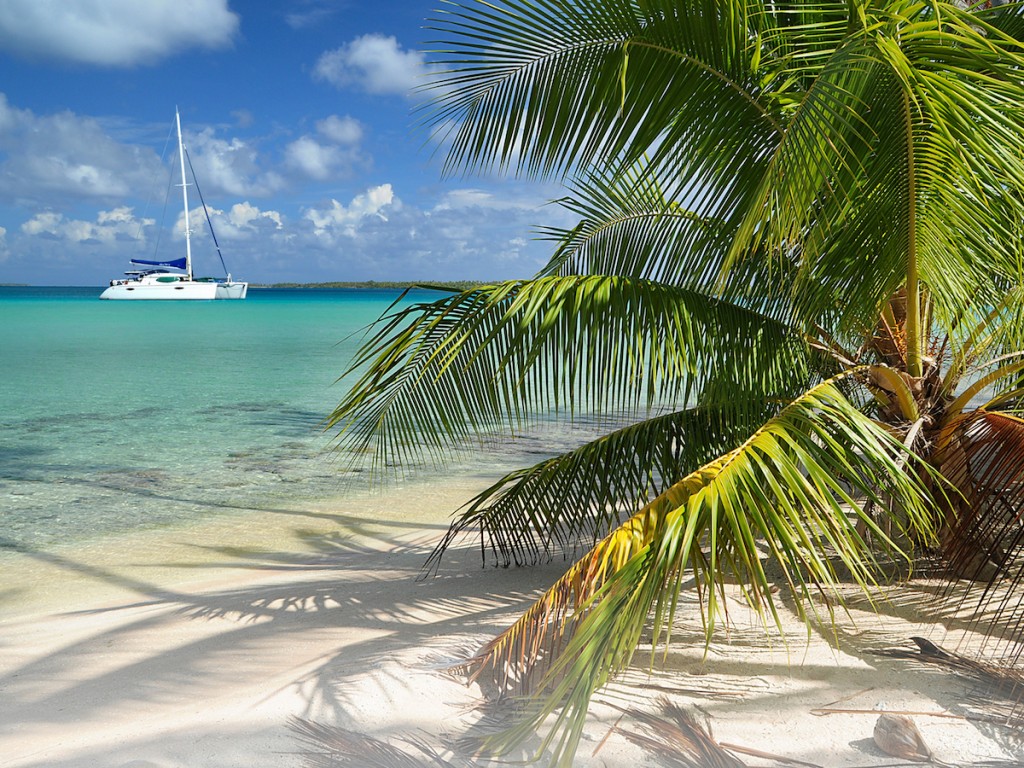
The Tuamotu archipelago and the Society Islands are popular for diving in Polynesia, and the Tuamotu archipelago is home to two of the best diving destinations; Rangiroa and Fakarava. Rangiroa is one of the largest atolls in the world, at 170 km2 (65.6 m2), and Fakarava is a UNESCO Biosphere Reserve. Both offer the opportunity to dive in crystal clear water whilst surrounded by marine life. The Tiputa Pass at Rangiroa has strong currents which attract grey reef sharks, occasional tiger and hammerhead sharks, manta rays, Napoleon wrasse, and numerous reef fish. Bottlenose dolphins are also seen at this dive site.
The Fakarava atoll has so much to offer that some liveaboards spend their entire itinerary at this one atoll. It is the best location in the archipelago to see sharks and is home to numerous grey reef sharks, plus plenty of manta cleaning stations.
Other Polynesia dive highlights include spawning Marbled groupers and the pristine corals of Pakaka Pass at Apataki, a vertical chasm and anemone-covered archway at Shark Hole in Tikehau, plus wall diving the Outer Wall in Kauehi.
The diving is best suited to more experienced divers, as the currents in the atolls can be very strong. Scuba diving is possible all year. January to March offer the warmest water temperatures whilst July to November are drier and cooler. Humpback whales can be seen during the colder season and marbled grouper spawn in June and July.
Oceanes Dream, Madagascar
Madagascar is well-known as the place to go for wildlife and rainforest tours and to support ecotourism. It is a wildlife haven and is gaining a reputation for its equally impressive marine life. Nosy B is the main dive destination and is a busy island known for encounters with whale sharks. Whilst much of the diving is centred around Nosy B, the peaceful and tiny outlying islands are being explored and becoming more accessible thanks to liveaboard safaris.
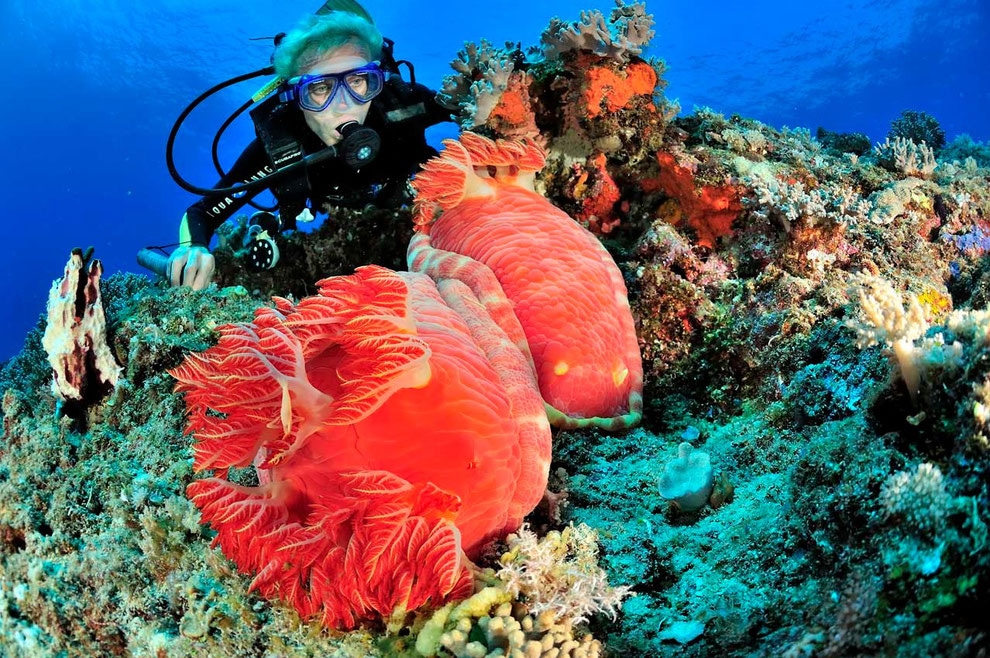
Liveaboard safaris in Madagascar are a laid-back affair, with plenty of time for relaxing in beautiful bays between dives. The Oceanes Dream catamaran is ideal for small groups wanting to explore the best of Madagascan diving. She caters to just 8 guests and explores the outlying islands in the Radames and Mitsio archipelagos.
The Radames archipelago is made up for four islands and is a large expanse of hard coral reef that has pristine dive sites. Mantas are commonly seen at cleaning stations along the reef and the dive sites are home to schools of barracuda, jacks, white tip reef sharks and hammerhead sharks. Safaris that visit this archipelago often include terrestrial wildlife tours, for lemur and chameleon spotting, and swimming with turtles is possible on Turtle Island.
The Mitsio archipelago has only one inhabited island and the area is famous for clear turquoise waters and unusual rock formations. These volcanic islands offer steep walls, tunnels and reefs, populated with manta and shark cleaning stations.
Diving is possible year-round but May to December is the main diving season, with peak season occurring in July and August. October to November is the best time to see whale sharks and humpback whales visit Madagascar between July and October.
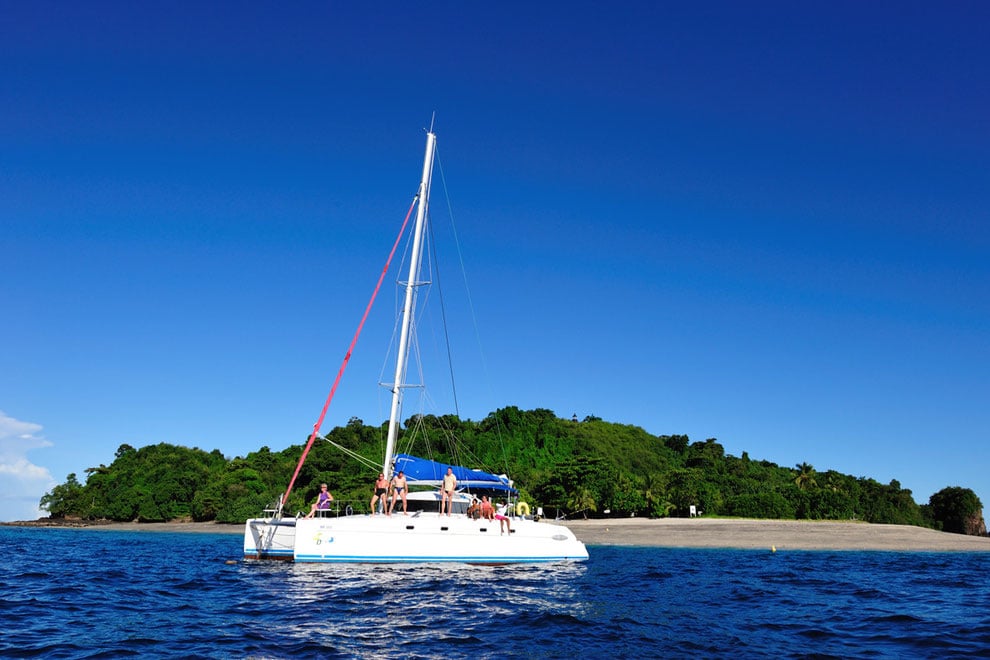
Nortada, Galapagos
The Galapagos Islands offer unique diving and wildlife watching experiences with species found nowhere else on earth. The islands are home to a vast array of animals and the Galapagos Marine Reserve is equally as impressive, being listed as a UNESCO World Heritage Site and well protected.
The islands are remote and best accessed by liveaboard safari. The 26m Nortada liveaboard is well-suited to small groups, catering for a maximum of 12 guests, and offers open circuit diving plus rebreather and technical diving support. Guests can access the best dive sites thanks to two 3m inflatable tenders. The Nortada not only offers safaris to explore the best of the Galapagos’ dive sites, she also visits the Faustro Llerena breeding centre, where guests can learn about breeding programs for giant tortoises and land iguanas.
Wolf and Darwin islands are the most well-known, and remote, dive sites of the Galapagos and are only accessible by liveaboard. Very few boats are permitted to stop at these islands and the dive sites are peaceful. The area around these islands is a highway for scalloped hammerhead sharks enroute to Cocos Island. Silky sharks, Galapagos sharks and manta rays also frequent the area. Divers are likely to also see turtles, eagle rays and abundant fish life when diving Wolf and Darwin. Wolf has underwater caverns and tunnels to explore and is a great place for night diving, whereas Darwin hosts whale sharks during June to November each year.
Other dive highlights include Cousin Rock for black corals, macro life and sea lions, plus Isabela and Fernandina for flightless cormorants, penguins, marine iguanas and other endemic species. Marine iguanas can be seen feeding underwater at Cape Douglas, and mola mola can also be seen in the area.
Sea conditions around Wolf and Darwin can be rough with large swells and currents, turning some dives into drift dives. Most of the dives are deep there and the diving is best suited to experienced divers. The dives at Cape Douglas are mostly shallow.
The Galapagos has two distinct dive seasons; the warm season of December to May and the cooler season of June to November. The warm season is calmer with less current and is ideal for hammerheads, silky and Galapagos sharks. The cool season is all about whale shark encounters, though there are still large schools of hammerheads present at this time of year.
 Discover liveaboard diving holiday solutions around the world at Liveaboard.com.
Discover liveaboard diving holiday solutions around the world at Liveaboard.com.
Gear News
Scubapro Free Octopus Promotion 2024
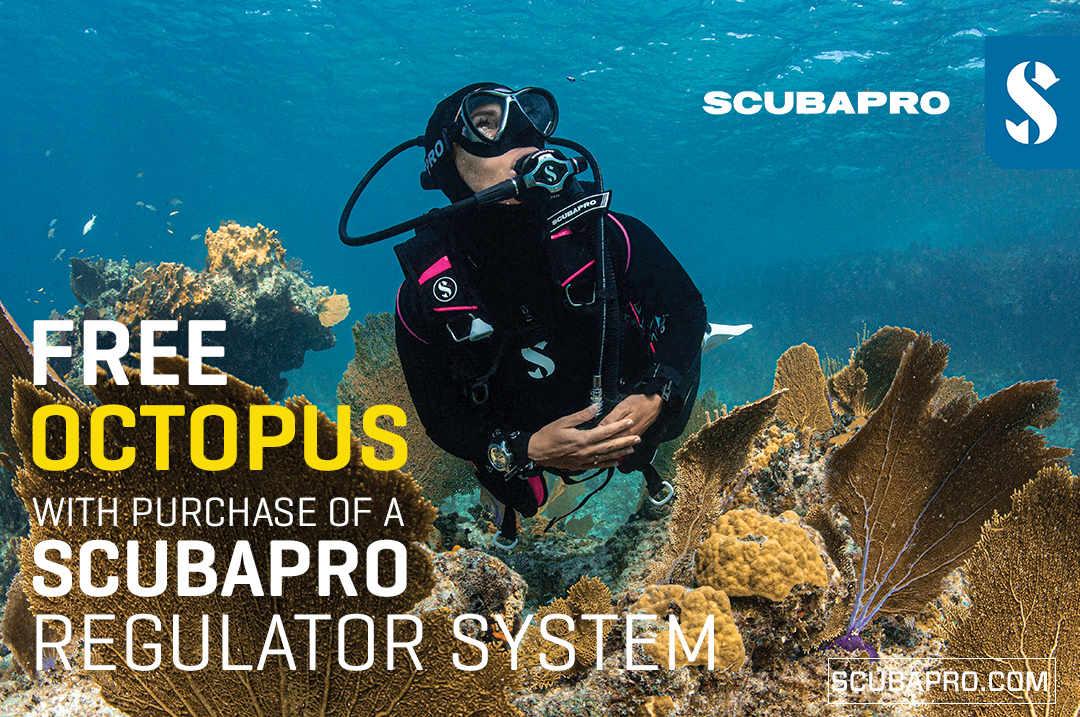
Free Octopus with every purchase of a SCUBAPRO regulator system
Just in time for the spring season, divers can save money with the FREE OCTOPUS SPRING PROMOTION! Until July 31st SCUBAPRO offers an Octopus for free
with every purchase of a regulator system!
Get a free S270 OCTOPUS with purchase of these combinations:
MK25 EVO or MK19 EVO with A700
MK25 EVO or MK19 EVO with S620Ti
MK25 EVO or MK19 EVO with D420
MK25 EVO Din mit S620Ti-X
Get a free R105 OCTOPUS with purchase of the following combinations:
MK25 EVO or MK19 EVO with G260
MK25 EVO or MK17 EVO with S600
SCUBAPRO offers a 30-year first owner warranty on all regulators, with a revision period of two years or 100 dives. All SCUBAPRO regulators are of course certified according to the new European test standard EN250-2014.
Available at participating SCUBAPRO dealers. Promotion may not be available in all regions. Find an authorized SCUBAPRO Dealer at scubapro.com.
More information available on www.scubapro.com.
Blogs
Northern Red Sea Reefs and Wrecks Trip Report, Part 3: The Mighty Thistlegorm
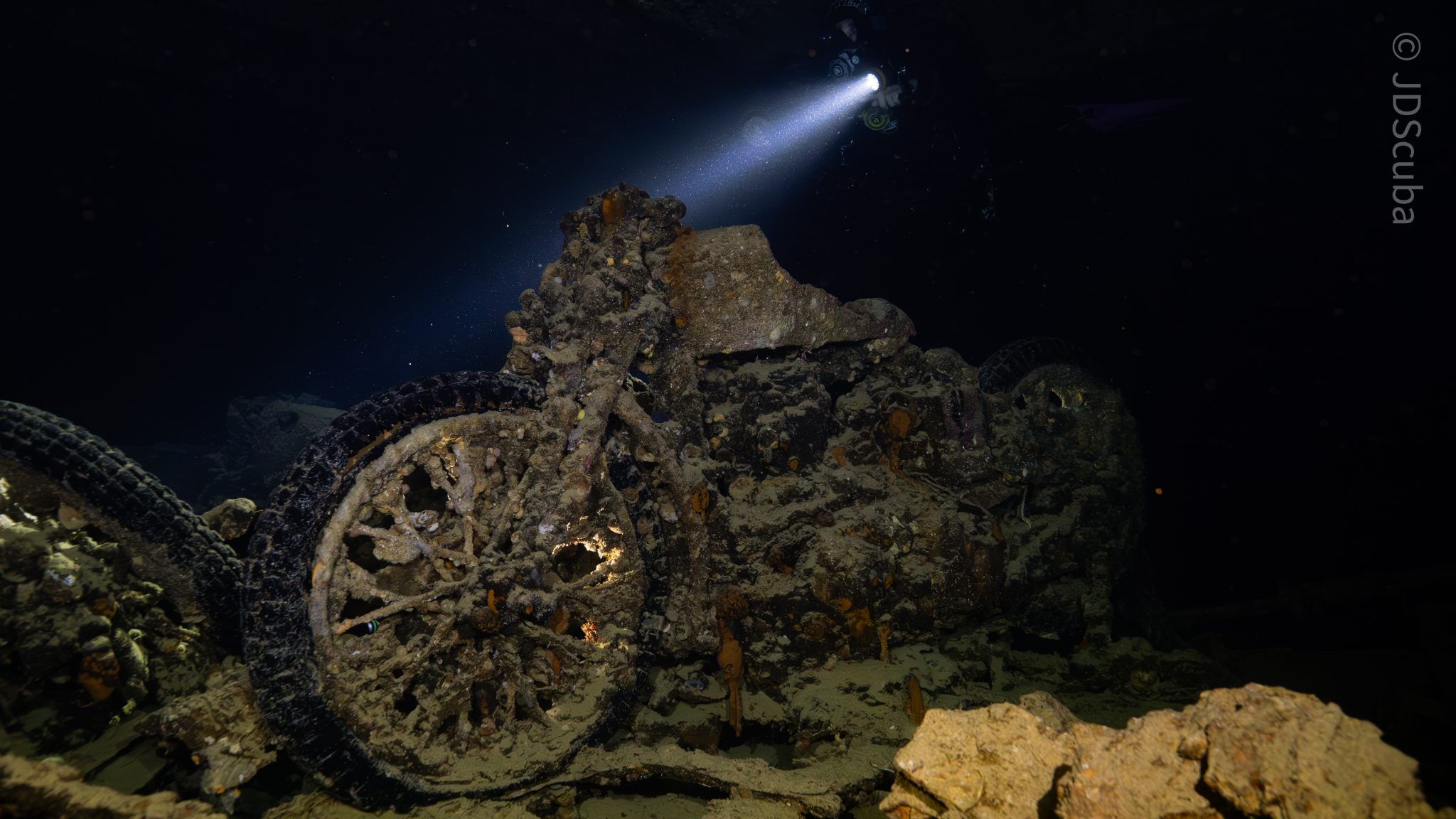
Jake Davies boards Ghazala Explorer for an unforgettable Red Sea diving experience…
Overnight, the wind picked up, making the planned morning dive a bit bumpy on the Zodiacs to the drop point on Thomas Reef. There, we would dive along the reef before descending through the canyon and then passing under the arch before ascending the wall with a gentle drift. The site provided great encounters with more pelagic species, including shoals of large barracuda, tuna, and bigeye trevally.
Once back on the boat, it was time to get everything tied down again as we would head back south. This time, with the wind behind us, heading to Ras Mohammed to dive Jackfish Alley for another great gentle drift wall dive before then heading up the coast towards the Gulf of Suez to moor up at the wreck of the Thistlegorm. This being the highlight wreck dive of the trip and for many onboard, including myself, it was the first time diving this iconic wreck. I had heard so much about the wreck from friends, and globally, this is a must on any diver’s list. Fortunately for us, there was only one other boat at the site, which was a rarity. A great briefing was delivered by Ahmed, who provided a detailed background about the wreck’s history along with all the required safety information as the currents and visibility at the site can be variable.
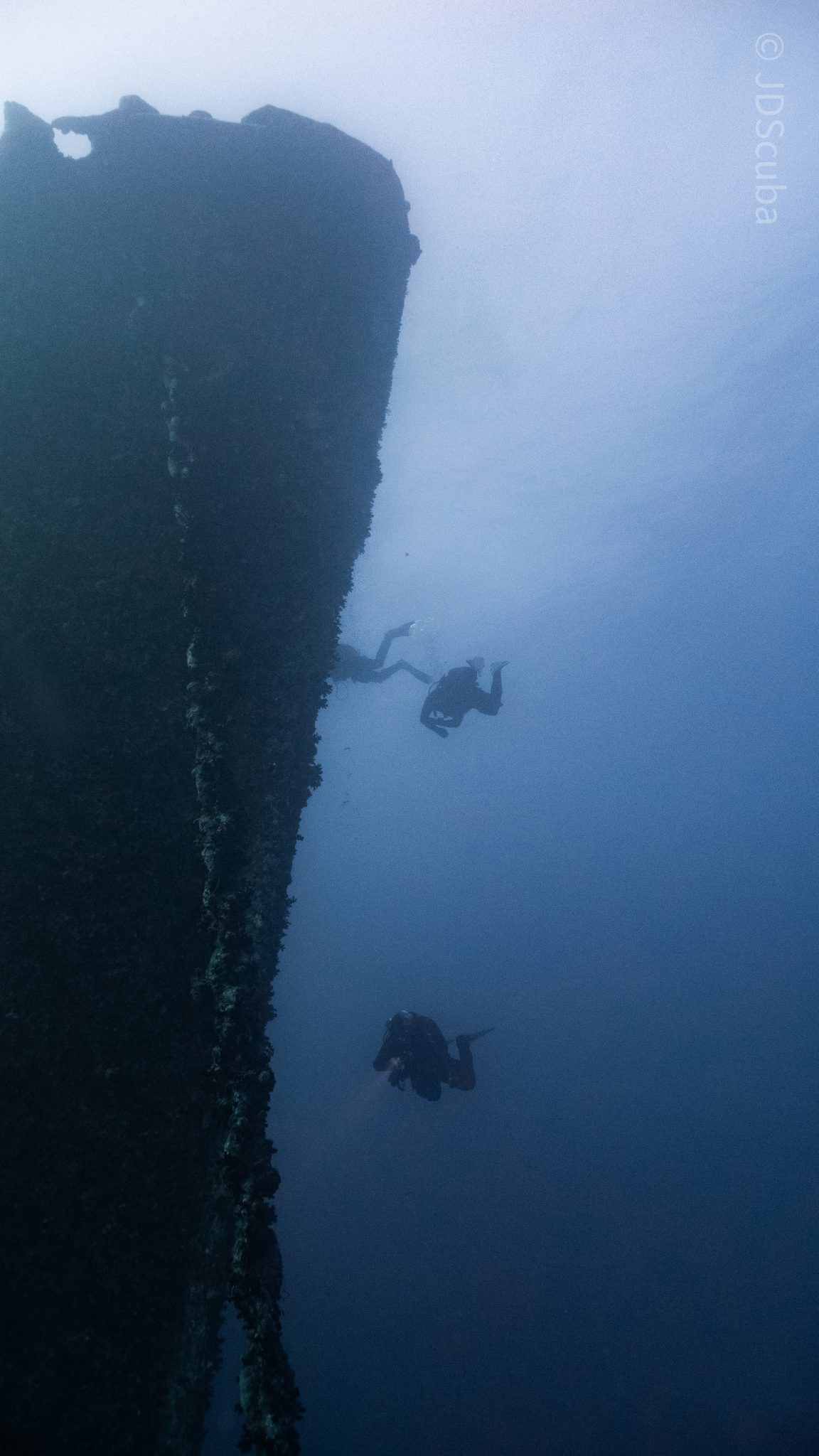
Kitting up, there was a lot of excitement on deck before entering the water and heading down the shoreline. Descending to the wreck, there was a light northerly current which reduced the visibility, making it feel more like the conditions that can be found off the Welsh coast. At 10m from the bottom, the outline of the wreck appeared as we reached the area of the wreck which had been bombed, as our mooring line was attached to part of the propeller shaft. Arriving on deck, instantly everywhere you looked there were many of the supplies which the ship was carrying, including Bren Carrier tanks and projectiles that instantly stood out.
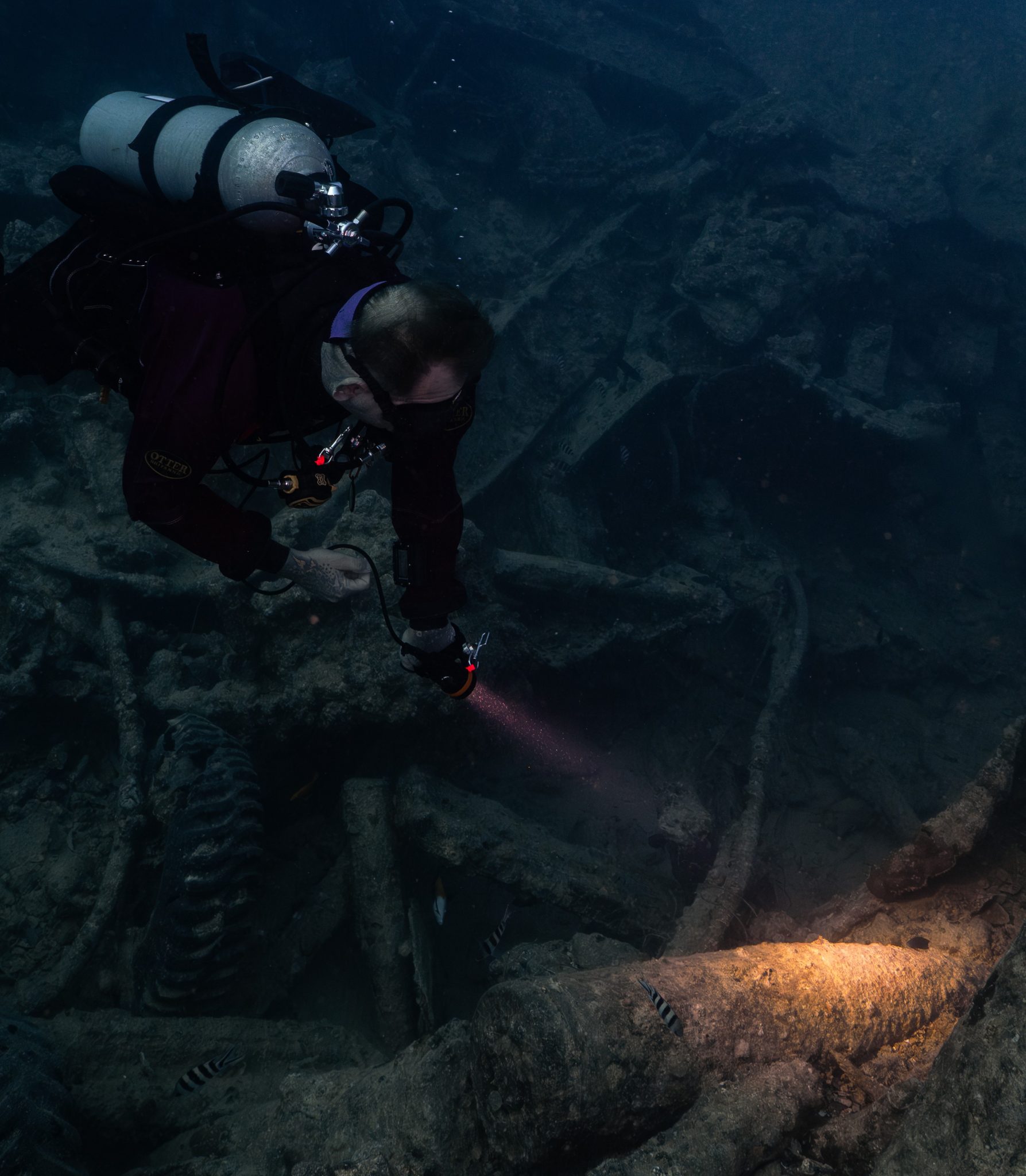
We headed around the exterior, taking a look at the large propeller and guns mounted on deck before entering the wreck on the port side to take a look in the holds. It was incredible to see all the trucks, Norton 16H, and BSA motorcycles still perfectly stacked within, providing a real snapshot in time.
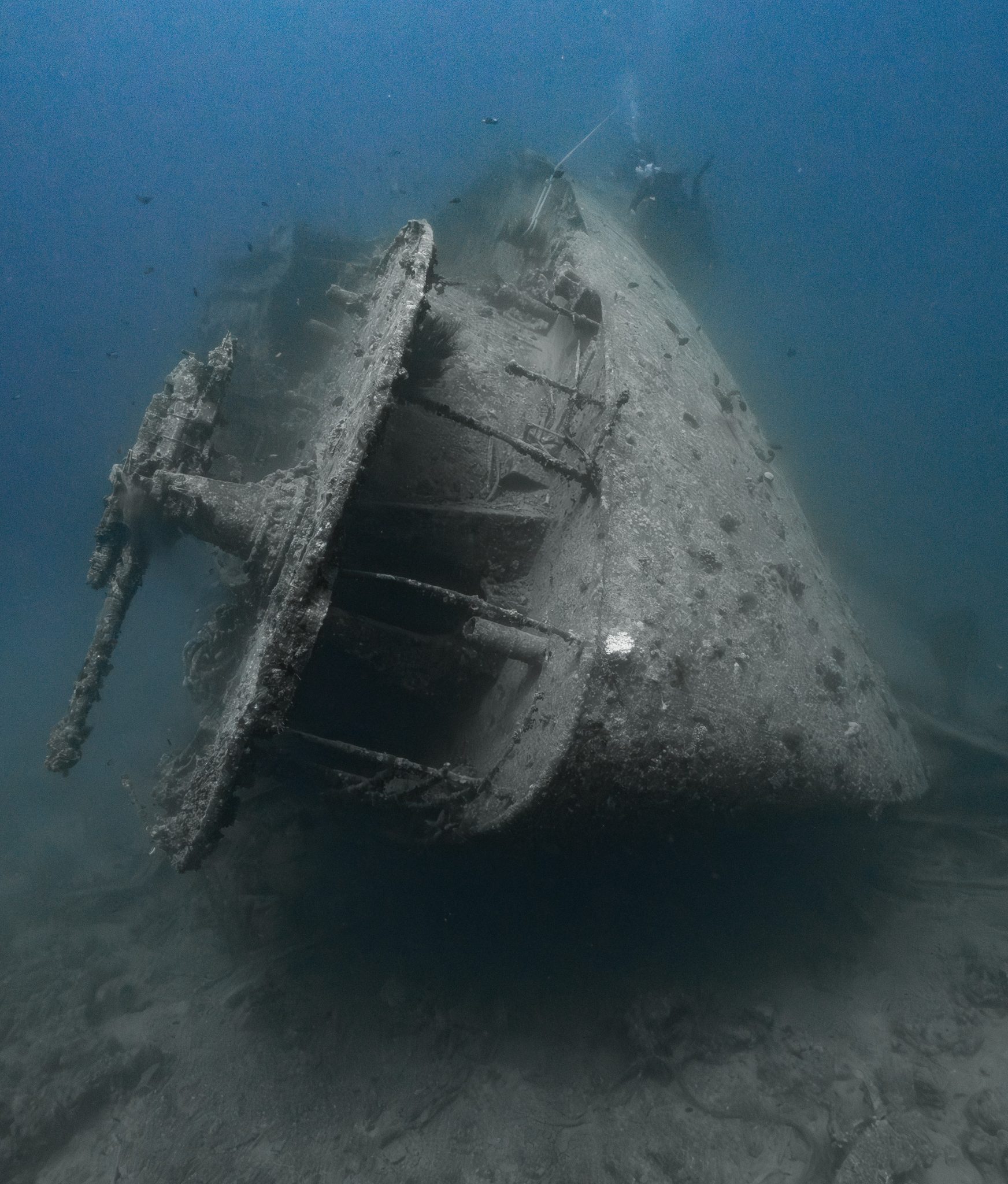
Overall, we had four dives on the Thistlegorm, where for all of the dives we were the only group in the water, and at times, there were just three of us on the whole wreck, which made it even more special, especially knowing that most days the wreck has hundreds of divers. Along with the history of the wreck, there was plenty of marine life on the wreck and around, from big green turtles to batfish, along with shoals of mackerel being hunted by trevally. Some unforgettable dives.
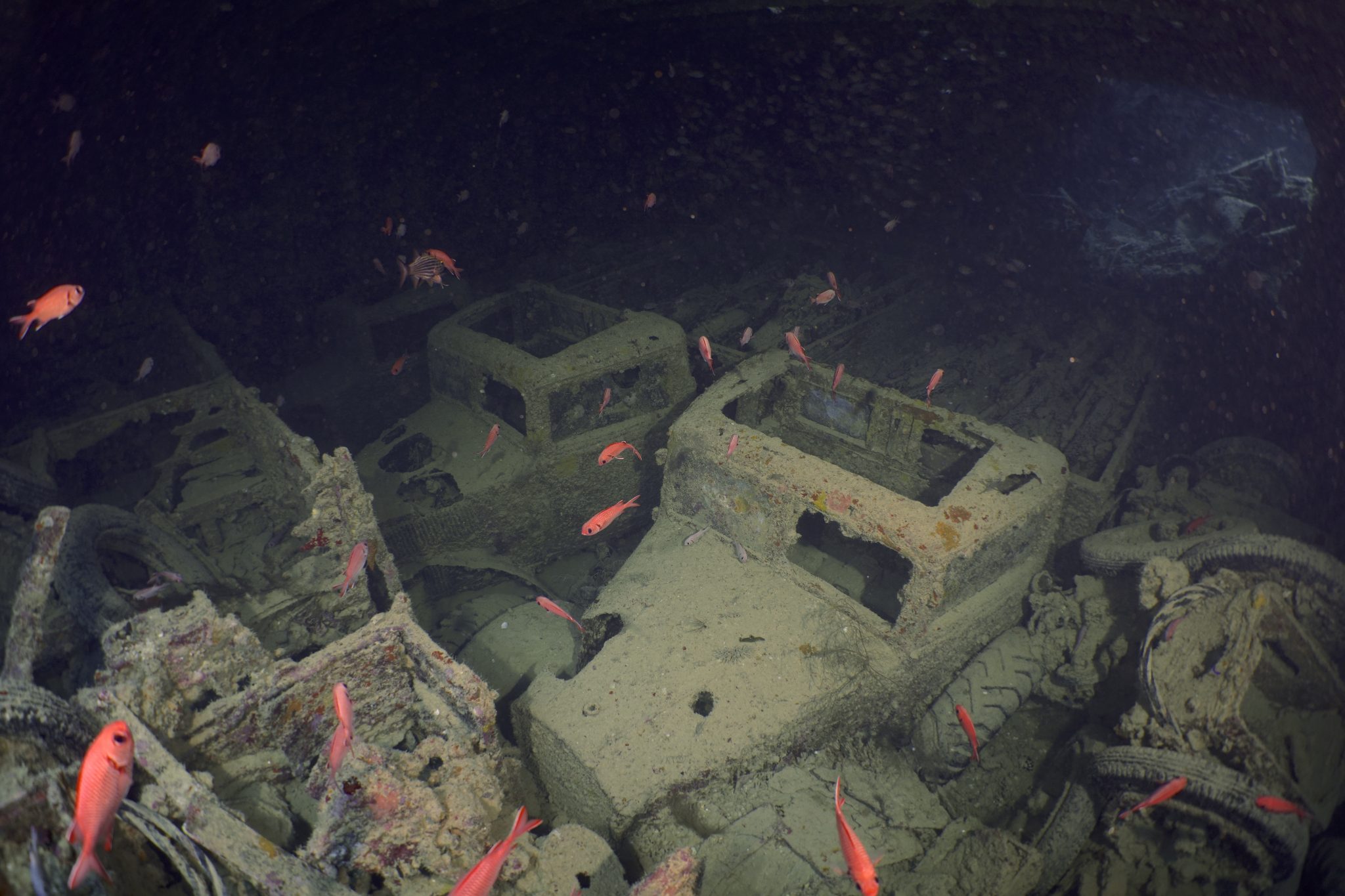
The final leg of the trip saw us cross back over the Suez Canal to the Gobal Islands where we planned to stay the night and do three dives at the Dolphin House for the potential of sharing the dive with dolphins. The site, which included a channel that was teeming with reef fish, especially large numbers of goatfish that swam in large shoals along the edge of the reef. These were nice relaxing dives to end the week. Unfortunately, the dolphins didn’t show up, which was okay as like all marine life they are difficult to predict and you can’t guarantee what’s going to be seen. With the last dive complete, we headed back to port for the final night where it was time to clean all the kit and pack before the departure flight the next day.
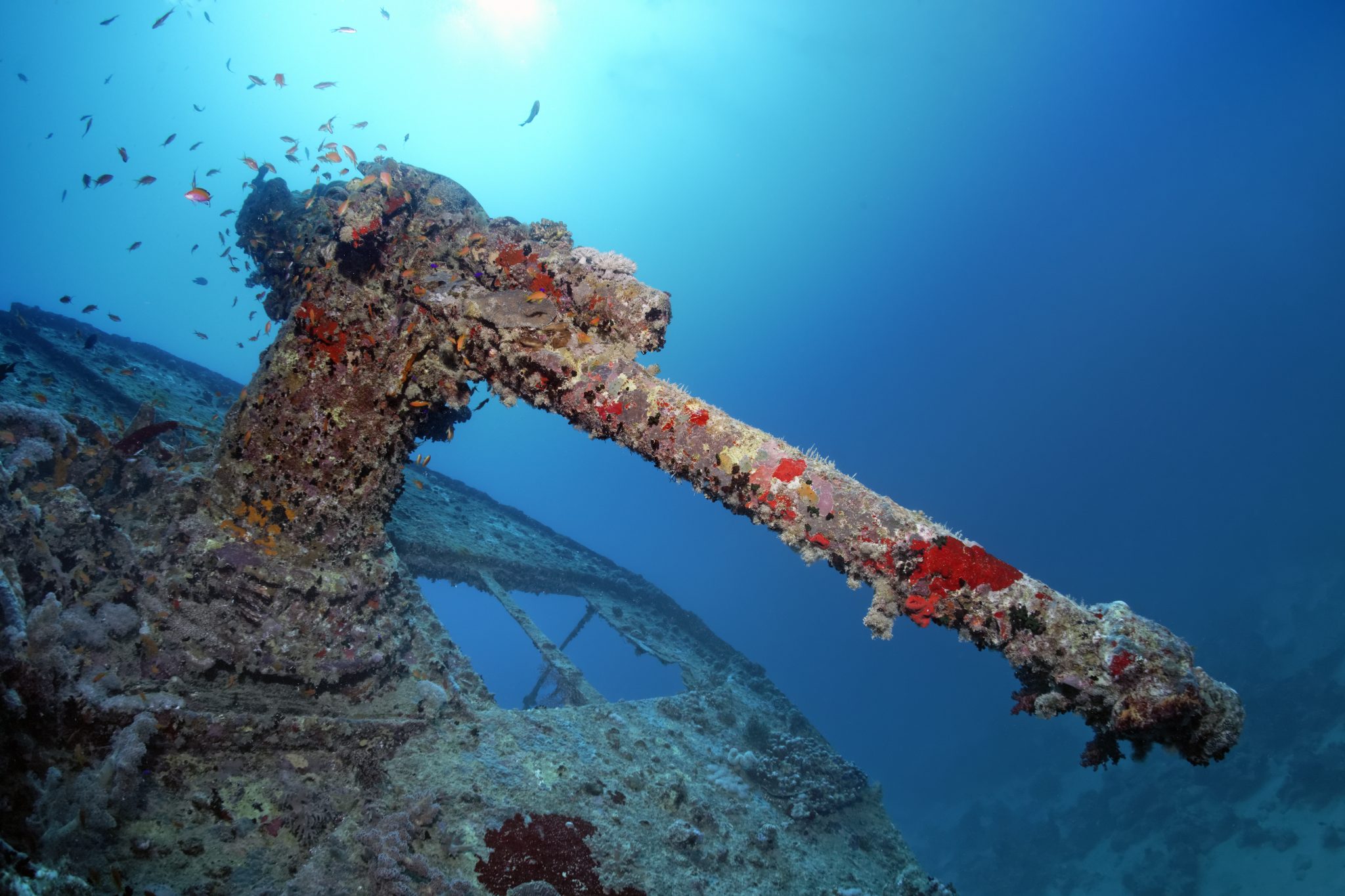
The whole week from start to finish on Ghazala Explorer was amazing; the boat had all the facilities you need for a comfortable week aboard. The crew were always there to help throughout the day and the chefs providing top quality food which was required after every dive. The itinerary providing some of the best diving with a nice mixture of wreck and reef dives. I would recommend the trip to anyone, whether it’s your first Red Sea liveaboard in the Red Sea or you’re revisiting. Hopefully, it’s not too long before I head back to explore more of the Red Sea onboard Ghazala Explorer.
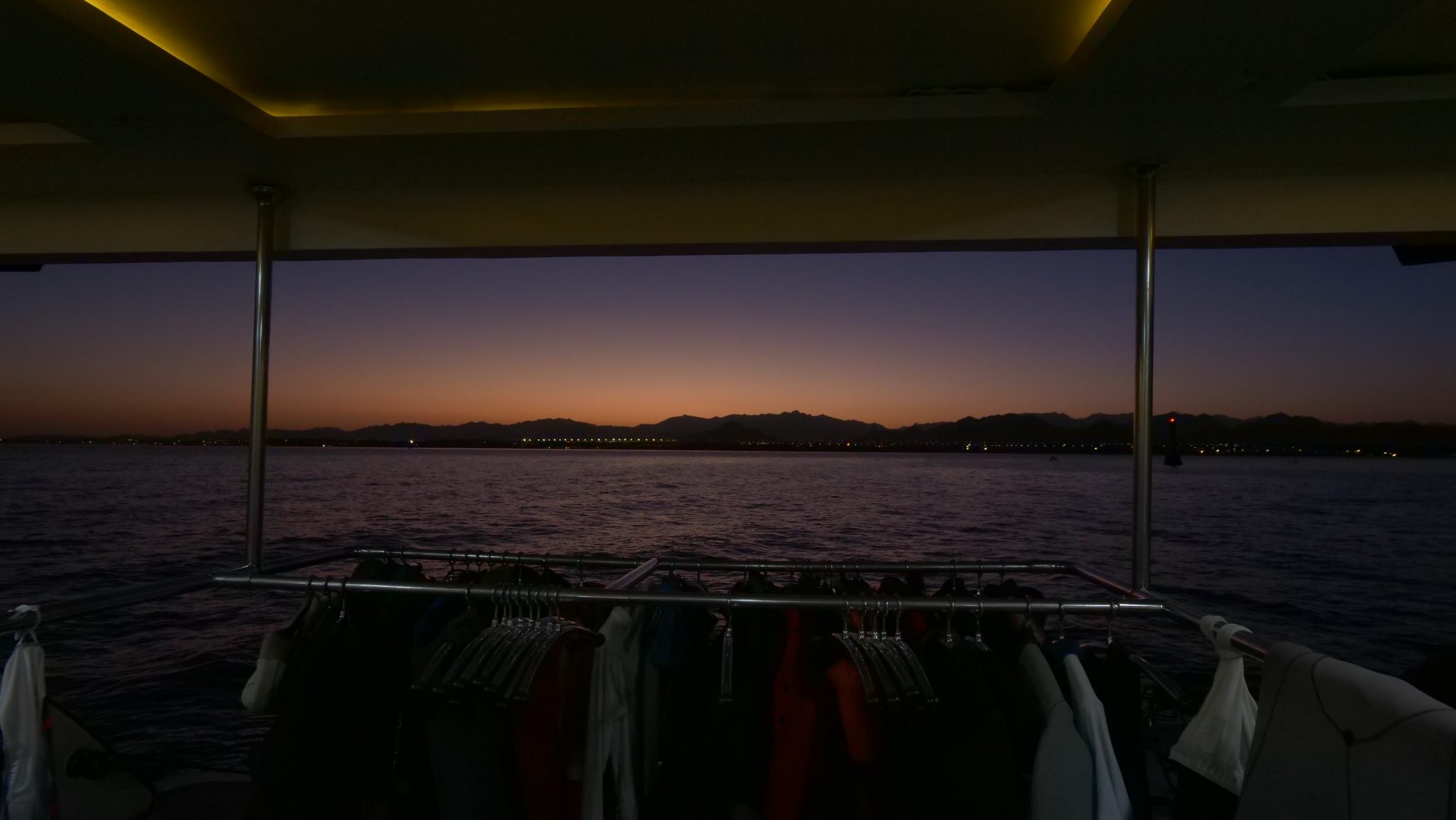
To find out more about the Northern Red Sea reef and wrecks itineraries aboard Ghazala Explorer, or to book, contact Scuba Travel now:
Email: dive@scubatravel.com
Tel: +44 (0)1483 411590
Photos: Jake Davies / Avalon.Red
-
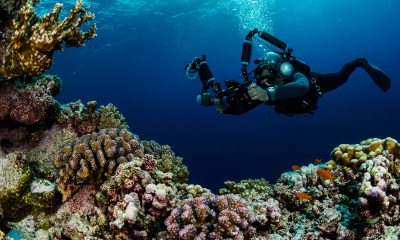
 News3 months ago
News3 months agoHone your underwater photography skills with Alphamarine Photography at Red Sea Diving Safari in March
-
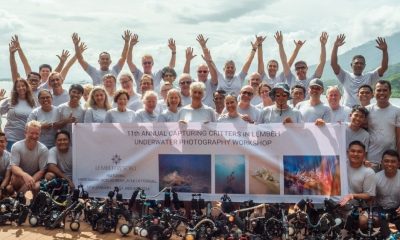
 News3 months ago
News3 months agoCapturing Critters in Lembeh Underwater Photography Workshop 2024: Event Roundup
-
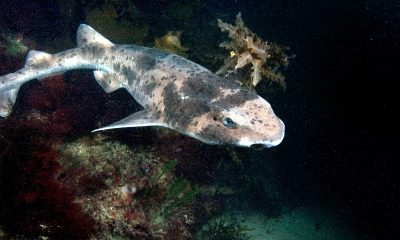
 Marine Life & Conservation Blogs2 months ago
Marine Life & Conservation Blogs2 months agoCreature Feature: Swell Sharks
-
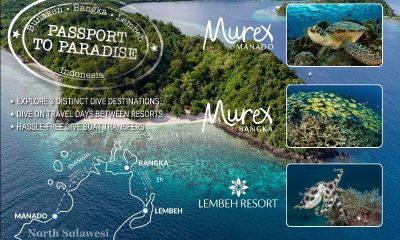
 Blogs2 months ago
Blogs2 months agoMurex Resorts: Passport to Paradise!
-
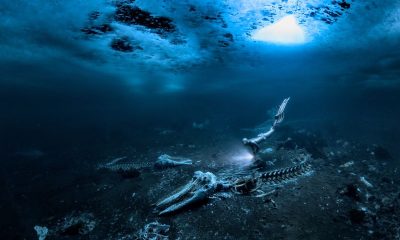
 Blogs2 months ago
Blogs2 months agoDiver Discovering Whale Skeletons Beneath Ice Judged World’s Best Underwater Photograph
-

 Gear Reviews3 months ago
Gear Reviews3 months agoGear Review: Oceanic+ Dive Housing for iPhone
-
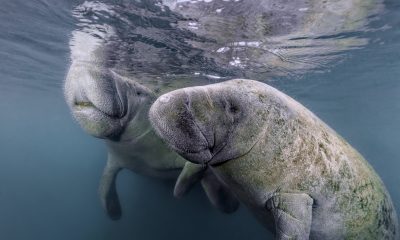
 Marine Life & Conservation2 months ago
Marine Life & Conservation2 months agoSave the Manatee Club launches brand new webcams at Silver Springs State Park, Florida
-
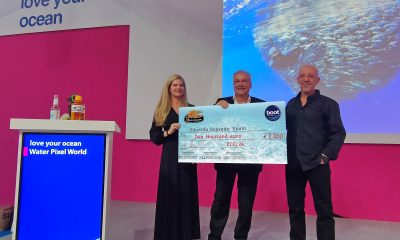
 News3 months ago
News3 months agoWorld’s Best Underwater Photographers Unveil Breathtaking Images at World Shootout 2023



